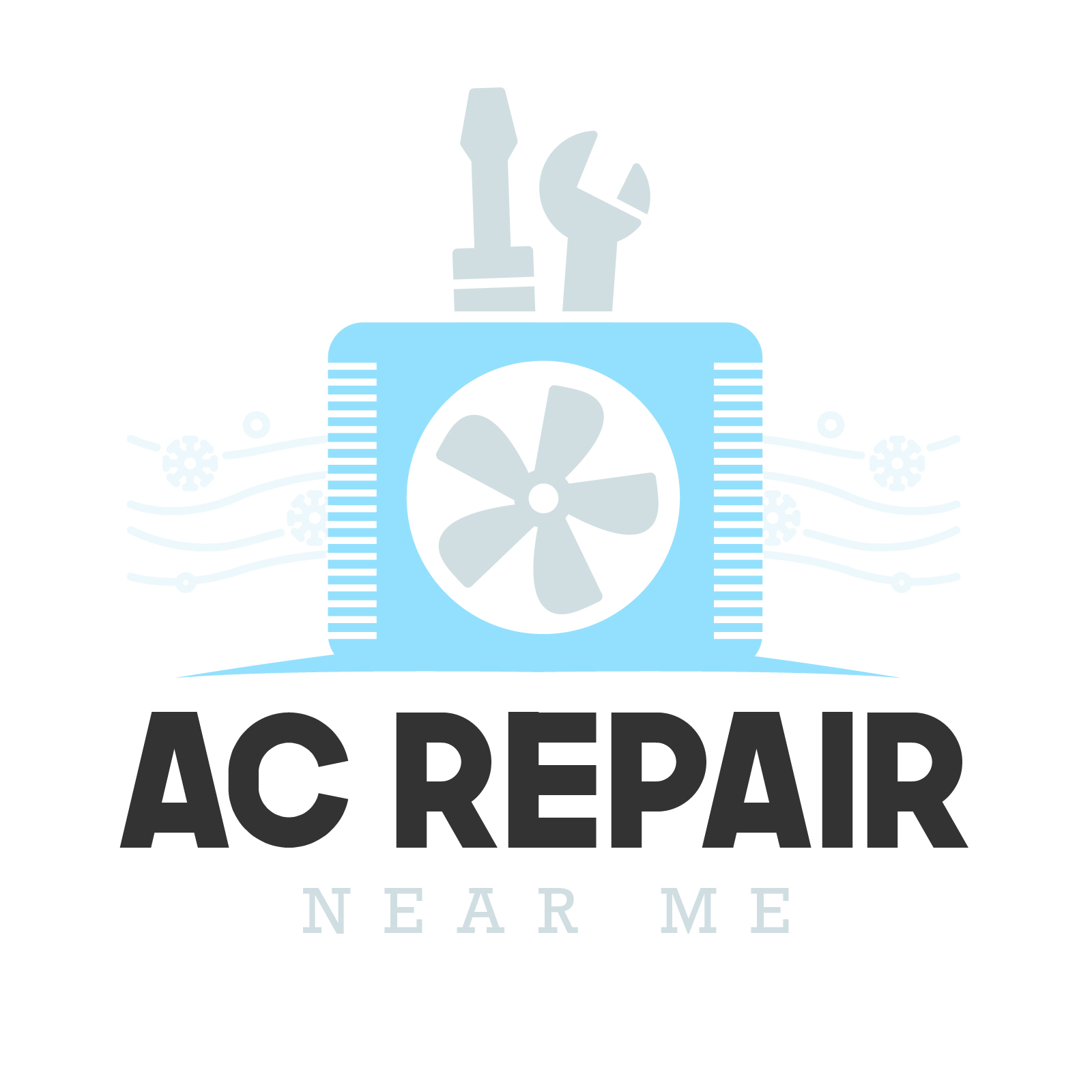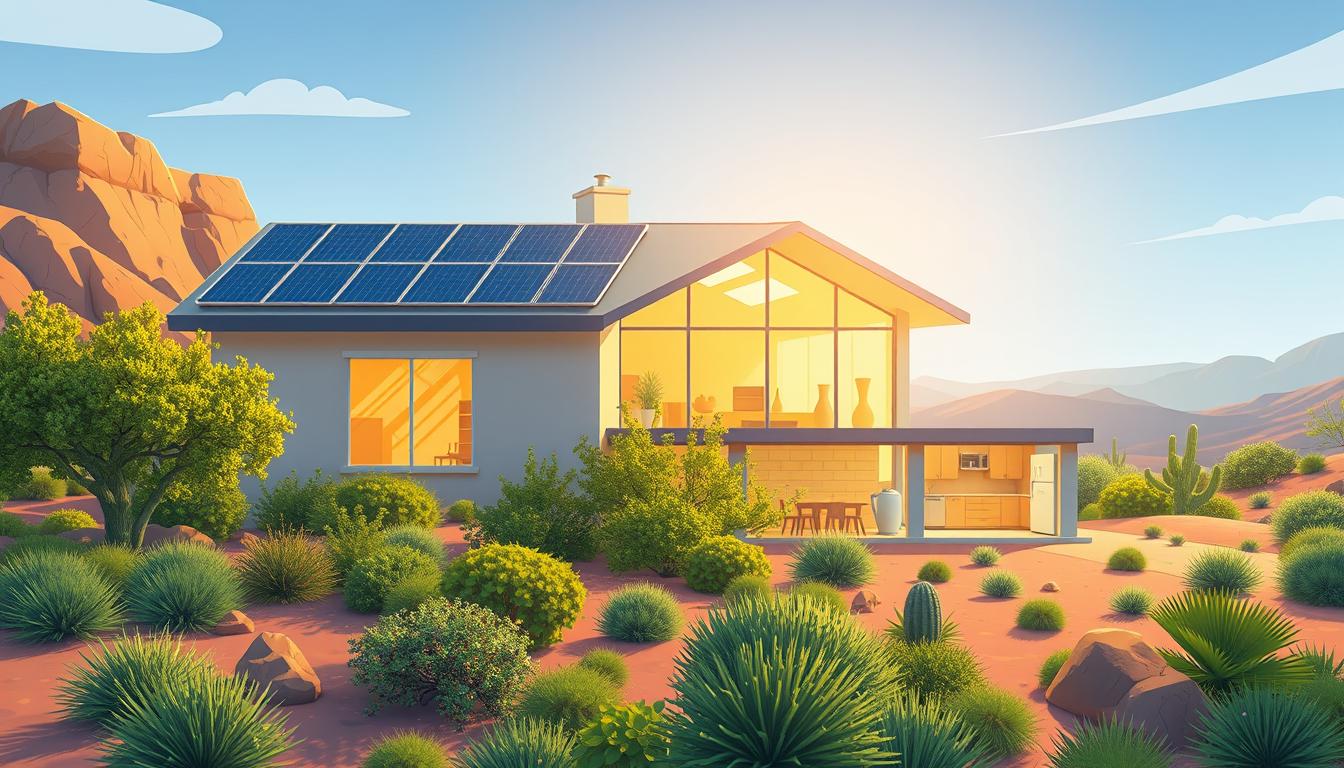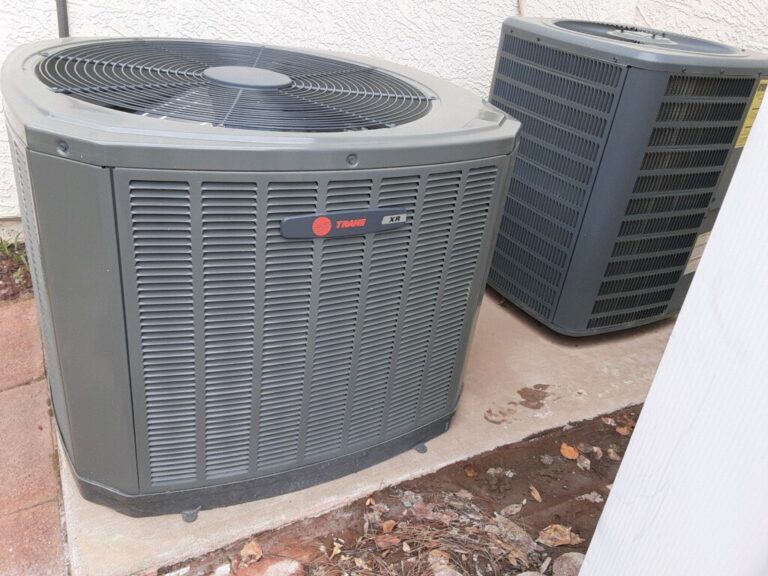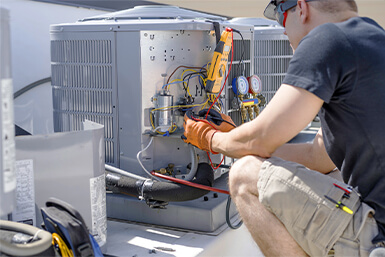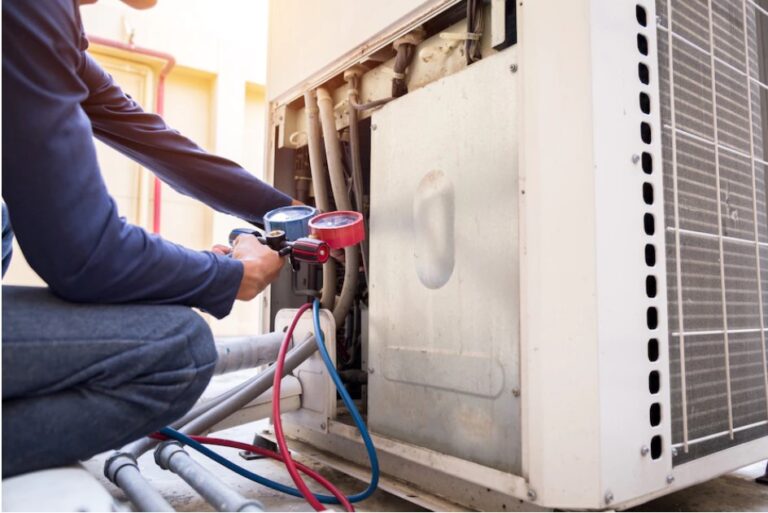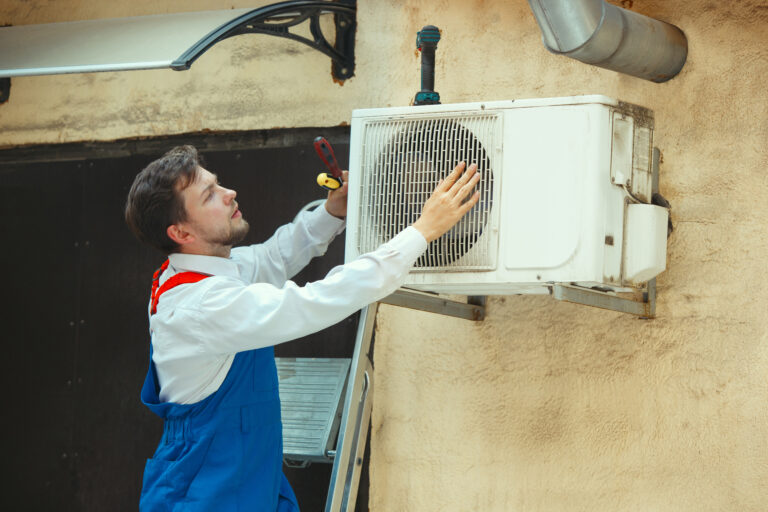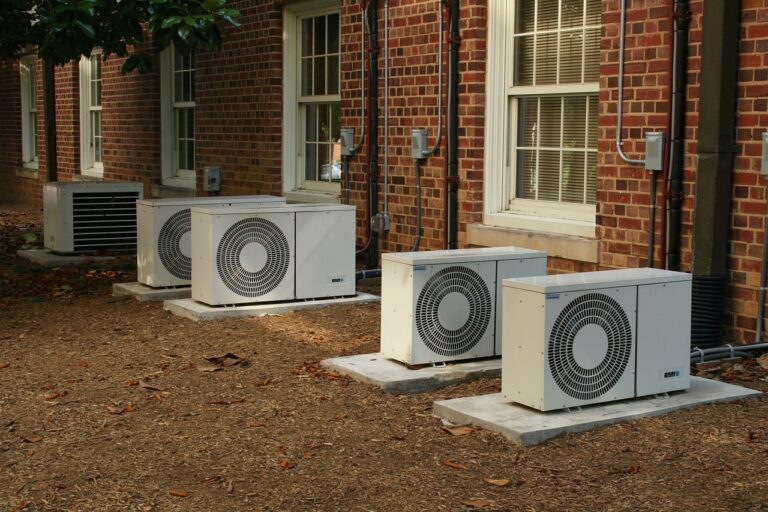What’s the Best SEER Rating for Arizona Homes in 2025?
Arizona’s desert climate demands high-performance air conditioning systems to maintain comfort during the scorching summers. As we approach 2025, understanding the SEER rating and its implications on energy efficiency is crucial for homeowners.
According to the U.S. Department of Energy, modern air conditioners use 30-50% less energy than their counterparts from the 1970s. Replacing a ten-year-old A/C unit with a new one can save 20-40% on cooling costs. This significant potential for savings underscores the importance of selecting the right air conditioning system.
Choosing the optimal SEER rating involves balancing comfort, energy efficiency, and long-term savings. As efficiency standards evolve, Arizona homeowners must stay informed to make the best decisions for their homes.
Key Takeaways
- Understanding SEER ratings is crucial for Arizona homeowners to balance comfort and energy efficiency.
- New efficiency standards and the transition to SEER2 ratings will impact air conditioning options in 2025.
- Replacing old A/C units with new, efficient models can lead to significant savings on cooling costs.
- The right SEER rating directly affects monthly utility bills and overall comfort during Arizona’s hot summers.
- A comprehensive understanding of SEER ratings helps homeowners make informed decisions about their cooling systems.
Understanding SEER and SEER2 Ratings
The transition to SEER2 ratings marks a significant shift in how air conditioning efficiency is measured and understood. This change reflects a more accurate representation of real-world performance.
What SEER Ratings Measure
SEER (Seasonal Energy Efficiency Ratio) ratings measure the efficiency of air conditioning systems over an entire cooling season. It calculates the ratio of cooling output to electrical energy input. A higher SEER rating indicates better efficiency.
The Transition from SEER to SEER2
The new SEER2 rating introduces more rigorous testing conditions to better simulate real-world installation scenarios. This includes increased external static pressure testing, known as the M1 testing procedure.
How SEER2 Testing Differs from SEER
SEER2 testing subjects air conditioners and heat pumps to higher external static pressure, raised by a factor of five. This change better reflects the conditions HVAC equipment faces when installed. As a result, a unit’s SEER2 rating is typically 4.5-10% lower than its SEER rating.
| Testing Condition | SEER | SEER2 |
|---|---|---|
| External Static Pressure | Lower | Higher (5 times) |
| Real-World Representation | Less accurate | More accurate |
With SEER2, the more stringent testing ensures that air conditioners meeting these standards deliver more reliable efficiency in actual home installations.
Arizona’s Minimum SEER Requirements for 2025
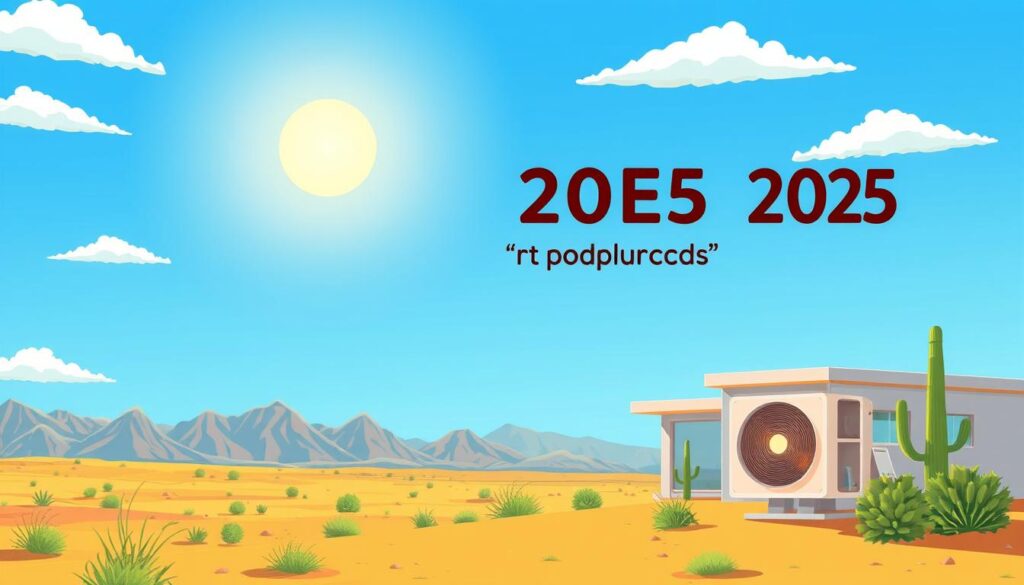
Arizona’s climate is one of the most challenging in the nation, demanding higher efficiency ratings for air conditioning units. The state’s extreme desert climate, characterized by summer temperatures regularly exceeding 110°F, creates one of the highest cooling demands in the country.
Current Minimum Standards in Arizona
As of January 2023, Tucson, Arizona, has implemented a minimum standard of 14.3 SEER2 for new air conditioning units. This requirement is a testament to the region’s need for high-efficiency cooling systems due to its hot climate. The Department of Energy sets these standards based on climate zones, with hotter regions like Arizona requiring higher minimum efficiency ratings.
Projected Changes for 2025
While current standards are set at 14.3 SEER2, it’s essential to stay informed about potential changes in 2025. Although specific projections are not available, the trend suggests a continued emphasis on improving energy efficiency. Homeowners should be prepared for potentially stricter standards that could further enhance the energy-saving capabilities of air conditioning systems.
Why Arizona Has Higher Requirements Than Other States
Arizona’s higher SEER requirements compared to other states are largely due to its extreme climate. Air conditioning systems in Arizona operate for 8-10 months of the year, significantly longer than in northern states where they may only run for 3-4 months. This prolonged usage underscores the importance of energy efficiency in controlling energy costs. Higher minimum standards help prevent excessive strain on the electrical grid during peak summer months and recognize the greater return on investment for higher-efficiency systems in hot climates.
SEER Rating Categories and What They Mean
Understanding SEER rating categories is crucial for homeowners in Arizona to make informed decisions about their air conditioning systems. SEER ratings are a measure of the cooling efficiency of air conditioning systems, and different categories offer varying levels of energy efficiency and comfort.
Baseline Efficiency: 14-16 SEER2
Air conditioning systems with a SEER2 rating of 14-16 are considered baseline efficiency. These systems meet the minimum energy efficiency standards set by the EPA through the Energy Star program. Energy Star air conditioning systems, which must have a SEER rating of 15 or higher, are 15% more efficient than standard models, according to the energy.gov website. While they may not offer the highest level of energy savings, they provide a reliable and cost-effective cooling solution for many homeowners.
Mid-Efficiency: 16-18 SEER2
Mid-efficiency air conditioning systems, rated between 16-18 SEER2, offer a step up in energy efficiency. These systems provide a balance between upfront cost and long-term energy savings. Homeowners who prioritize energy efficiency without breaking the bank may find these systems appealing. They are particularly suitable for homes with moderate cooling needs.
High-Efficiency: 20+ SEER2
High-efficiency units, with SEER2 ratings of 20 or higher, represent the premium tier of air conditioning systems. These systems utilize variable-speed compressors that can operate at multiple levels of capacity, precisely matching cooling output to the home’s needs. This technology provides superior temperature consistency and minimizes energy consumption. For larger Arizona homes or those with significant solar exposure, these systems offer the best performance and can reduce cooling costs by up to 40-50% compared to minimum-efficiency systems.
The Best SEER Rating for Arizona Homes in 2025
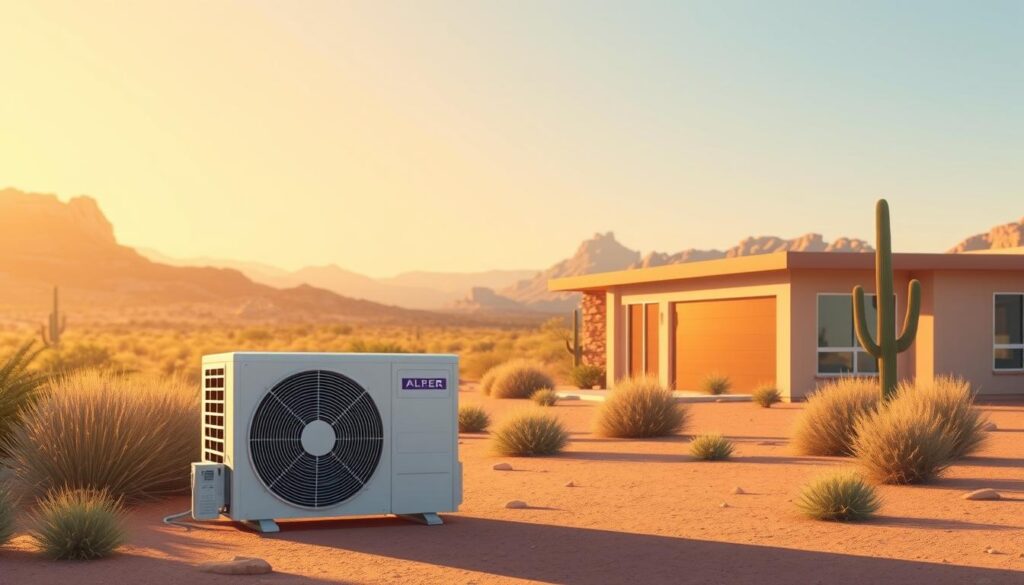
Determining the best SEER rating for Arizona homes in 2025 requires a nuanced understanding of cooling needs and energy efficiency. Arizona’s hot climate demands high-performance air conditioning systems that can maintain a comfortable temperature while minimizing energy consumption.
Optimal SEER Ratings for Different Home Sizes
The optimal SEER rating can vary based on home size. For smaller homes, a mid-efficiency rating might suffice, while larger homes benefit from higher efficiency ratings. Two-stage air conditioner systems, which offer both low and high-powered options, can provide better comfort and energy savings.
| Home Size | Recommended SEER2 Rating | Benefits |
|---|---|---|
| Small (less than 1,500 sqft) | 16 SEER2 | Balanced efficiency and cost |
| Medium (1,500-3,000 sqft) | 18 SEER2 | Enhanced comfort and energy savings |
| Large (more than 3,000 sqft) | 20+ SEER2 | Maximum energy efficiency and comfort |
Balancing Initial Cost vs. Long-Term Savings
When choosing a SEER rating, it’s essential to balance the initial cost of the system with long-term energy savings. Higher SEER2 ratings typically come with higher upfront costs but offer greater savings over time. For more information on comparing different SEER2 ratings, visit this article.
Recommendations Based on Usage Patterns
Usage patterns significantly influence the ideal SEER rating. For instance, year-round residents benefit from higher SEER2 ratings (18+), while seasonal residents might find 16 SEER2 more economical. Homes with occupants sensitive to temperature fluctuations or those using zoning cooling systems benefit from higher SEER2 ratings with variable-speed technology.
- Year-round residents: 18+ SEER2 for continuous operation during peak heat.
- Seasonal residents: 16 SEER2 for a balance between efficiency and cost.
- Homes with sensitive occupants: 18+ SEER2 for improved comfort.
Energy Savings Comparison: 14 vs. 16 vs. 18+ SEER2
When considering a new air conditioner installation, understanding the potential energy savings is crucial for Arizona homeowners. The SEER2 rating of an HVAC system plays a significant role in determining both the initial cost and long-term energy efficiency.
The SEER2 rating measures the efficiency of an air conditioning unit. Higher ratings indicate better efficiency. In Arizona’s hot climate, a higher SEER2 rating can lead to significant energy savings.
Calculating Potential Savings in Arizona’s Climate
Arizona’s extended cooling season and high cooling demands make higher SEER2 systems particularly beneficial. For instance, upgrading from a 14 SEER2 to a 16 SEER2 system can result in noticeable energy savings.
The exact savings depend on various factors, including the size of the home, insulation, and usage patterns. However, as a general guideline, a 16 SEER2 system is considered a good investment for many Tucson homeowners, given the potential for long-term savings.
Return on Investment Timeline
The return on investment (ROI) for higher SEER2 systems varies based on the cost of the unit and the energy savings it provides. Here is a breakdown of the typical ROI timelines for different SEER2 ratings:
| SEER2 Rating | Price Premium | ROI Timeline |
|---|---|---|
| 16 SEER2 | $800-$1,200 | 3-5 years |
| 18 SEER2 | $1,500-$2,500 | 5-7 years |
| 20+ SEER2 | $3,000-$5,000 | 7-10 years |
These ROI calculations are further improved when factoring in utility rebates, tax incentives, and the increased home value that high-efficiency HVAC systems provide.
Advanced Features in Higher SEER Units
For Arizona homes, higher SEER-rated air conditioning systems offer enhanced performance and comfort through advanced features. These units are designed to provide more efficient cooling, better humidity control, and improved overall comfort.
Two-Stage and Variable-Speed Compressors
Higher SEER units often come equipped with two-stage or variable-speed compressors. These advanced compressors allow the air conditioning system to adjust its cooling capacity based on the home’s needs, providing more consistent temperatures and improved humidity control. This results in a more comfortable indoor environment.
Smart Thermostat Integration
Many higher SEER units can be integrated with smart thermostats, enabling homeowners to control their cooling systems remotely and optimize their energy usage. This integration can lead to significant energy savings and enhanced comfort.
Humidity Control Benefits
Effective humidity control is crucial for maintaining a comfortable indoor climate, especially in Arizona’s monsoon season. Higher-efficiency air conditioning systems with variable-speed technology excel at maintaining optimal moisture levels between 40-50%. The benefits of improved humidity control include:
- Enhanced comfort without lowering the temperature
- Reduced potential for mold and mildew growth
- Better indoor air quality
A comparison of different SEER-rated units and their humidity control capabilities is shown in the table below:
| SEER Rating | Humidity Control | Energy Efficiency |
|---|---|---|
| 14 SEER | Basic | Standard |
| 16 SEER | Improved | Moderate |
| 18+ SEER | Advanced | High |
Beyond SEER: Other Factors Affecting AC Efficiency
While SEER ratings provide a crucial benchmark for air conditioner efficiency, other factors significantly impact the overall performance of your home cooling system. Understanding these elements can help Arizona homeowners optimize their air conditioning units for better efficiency and cost savings.
Proper Sizing and BTU Requirements
Selecting an air conditioner with the correct BTU (British Thermal Unit) rating is crucial for efficient cooling. An oversized or undersized unit can lead to increased energy consumption and reduced system lifespan. Proper sizing ensures that your air conditioning system operates at peak efficiency, providing optimal home cooling while using less energy. A professional HVAC technician can perform the necessary calculations to determine the ideal BTU rating for your home.
Home Insulation and Ductwork
Adequate insulation and well-sealed ductwork are essential for maintaining the efficiency of your central air system. Insulation helps to keep cooled air inside your home, while duct leaks can cause significant energy losses. Ensuring that your home is well-insulated and that your ductwork is properly sealed can significantly enhance the overall efficiency of your air conditioner.
| Factor | Impact on Efficiency | Improvement Strategy |
|---|---|---|
| Home Insulation | Reduces heat gain | Upgrade to better insulation materials |
| Ductwork | Prevents cooled air loss | Seal leaks and insulate ducts |
| System Sizing | Ensures optimal operation | Consult a professional for sizing |
Maintenance and System Longevity
Regular maintenance is crucial for maintaining the rated efficiency of any air conditioning system. Studies show that without annual service, efficiency can decline by 5% per year. Professional maintenance typically includes coil cleaning, refrigerant level checks, electrical component inspection, and airflow verification – all critical for optimal performance. By maintaining your HVAC system properly, you can extend its lifespan and ensure it continues to operate efficiently.
By considering these factors in addition to SEER ratings, Arizona homeowners can create a more efficient and effective home cooling system. Regular maintenance, proper sizing, and adequate insulation all contribute to a well-functioning air conditioner that provides reliable cooling while minimizing energy consumption.
Making the Smart Choice for Your Arizona Home
For Arizona residents, determining the ideal SEER2 rating involves balancing upfront costs with long-term energy savings and comfort. When selecting an air conditioner, it’s essential to consider several factors to make an informed decision.
The optimal SEER2 rating for most Arizona homeowners in 2025 will be between 16 and 18, offering a balance between initial cost and long-term energy efficiency. However, if you plan to stay in your home for 10 or more years, investing in a 20+ SEER2 system can provide superior comfort and significant long-term savings.Key Considerations:
Look for Energy Star certified systems, which meet or exceed EPA efficiency requirements and often qualify for utility rebates and tax incentives. Consider heat pumps as an alternative to traditional air conditioners, as they offer both heating and cooling with excellent efficiency ratings.
Don’t overlook the importance of proper sizing, quality installation, and ongoing maintenance. These factors are as crucial as the SEER2 rating in ensuring your system delivers comfort and efficiency throughout its lifespan. Factor in available rebates and incentives, such as federal tax credits and utility company rebates, to reduce the cost premium for higher-efficiency systems.
By combining the right SEER2 rating with proper installation and maintenance, Arizona homeowners can enjoy optimal comfort while minimizing energy costs.
